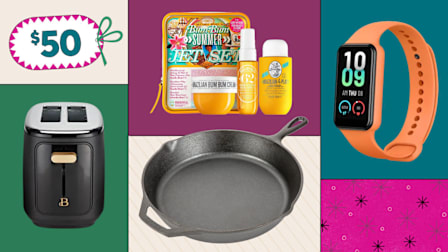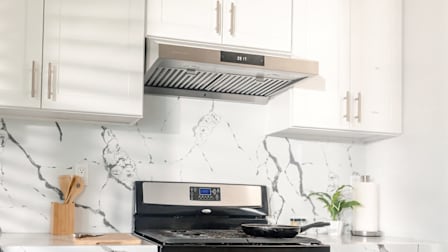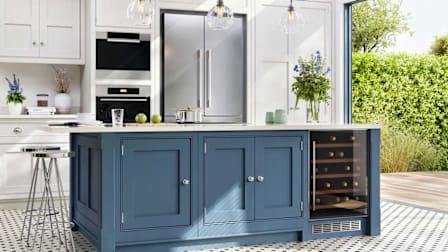Face-Off: Blender vs. Food Processor
A blender should be your first choice for making smoothies. But what about meal prep and other kitchen tasks?
When you shop through retailer links on our site, we may earn affiliate commissions. 100% of the fees we collect are used to support our nonprofit mission. Learn more.

Given how much we value each square inch of counter and cabinet space, do you really need a blender and a food processor? Blenders are one of the most popular countertop appliances—and they’re used more frequently than food processors, according to the market research company Mintel.
You can purée food in either appliance, but blenders are usually better at this task. Crushing ice? “That’s the blender’s job, as the ice can damage the food processor’s chopping blade and plastic container,” says Cindy Fisher, who has tested both appliances for Consumer Reports for more than 20 years.
And when it comes to making smoothies, you want an appliance that does well in our tests for making icy drinks and puréeing vegetables. That’s a blender.
“But the blender can’t slice or shred, and can chop just a few foods, such as a hard cheese like Parmesan and vegetables if they’re already cut up,” Fisher says.
When to Use a Blender
Blenders are ideal for making icy drinks, whipping up smoothies, and crushing ice. And when it comes to puréeing, blenders are usually better than food processors.
The best blenders ace our tests for making icy drinks, crushing ice, and puréeing. For icy drinks, we make nonalcoholic piña coladas. (When a blender rates excellent in this test, you can expect a smoothie with a creamy, consistent texture. A very good rating means there are tiny bits in the mix.) In our ice crush test, we toss in seven ice cubes and give it a whirl. To test puréeing, we turn veggies into soup.
When to Use a Food Processor
These multitasking machines have sharp blades or discs that chop, slice, shred, grate, and purée. Some also come with a blunt blade for kneading dough or one that turns out julienned vegetables.
In our food processor tests, we chop onions and almonds, slice celery and mushrooms, shred carrots and cheese, purée carrots and peas, and grate cheese. The top processors prove their mettle in the kitchen.
Food processors have a big bowl with a feeding tube, an S-shaped blade, and a top that locks into place. Most come with other blade options for shredding and slicing. There are usually two settings: On/Off and Pulse, for running the processor in short bursts for more precise control. The weight of a food processor ranges from under 5 pounds to nearly 20 pounds. You’ll find this information and more in the features & specs section of our food processor ratings.
There are several dozen models in our ratings. Here’s a quick overview of the ones that have come through the lab:
• Price: $30 to $700
• Overall Score: 35 to 81
• Capacity: 3 to 18 cups
Our food processor buying guide offers details that will help you choose the best one for your cooking style and budget. Below is a look at three impressive food processors from our tests. For dozens of more options, CR digital members can dive into our complete food processor ratings.
Blender and Food Processor Combos
Want a blender and a food processor? There’s an appliance that combines both capabilities. They’re usually small, saving you precious counter space in your kitchen. Check out CR’s picks of the best blender and food processor combos.




















